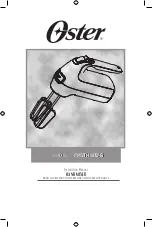
31
REVERBS
Reverberation (or “reverb” for short) is the complex effect created by the way we perceive sound in an en-
closed space. When sound waves encounter an object or boundary, they don’t just stop. Some of the sound
is absorbed by the object, but most of the sound is reflected or is diffused. In an enclosed space, reverb is
dependent on many features of that space, including the size, shape and the type of materials that line the
walls. Even with closed eyes, a listener can easily tell the difference between a closet, a locker room and
a large auditorium. Reverb is a natural component of the acoustic experience, and most people feel that
something is missing without it.
Hall Reverb
A Hall is designed to emulate the acoustics of a concert hall – a space large enough to contain an orchestra
and an audience. Because of the size and characteristics, Halls are the most natural-sounding reverbs, de-
signed to remain “behind” the direct sound – adding ambience and space, but leaving the source unchanged.
This effect has a relatively low initial echo density which builds up gradually over time. Vocal Hall and Drum
Hall reverbs are specifically tailored for those uses. Vocal Hall has as lower overall diffusion which works well
with program material that has softer initial transients like a voice. Drum Hall has a higher diffusion setting
which is necessary to smooth out faster transient signals found in drums and percussion instruments. In ad-
dition to general instrumental and vocal applications, the Hall program is a good choice for giving separately
recorded tracks the sense of belonging to the same performance.
Plate Reverb
A Plate reverb is a large, thin sheet of metal suspended upright under tension on springs. Transducers attached
to the plate transmit a signal that makes the plate vibrate, causing sounds to appear to be occurring in a
large, open space. The Plates in the FX processor model the sound of metal plates with high initial diffusion
and a relatively bright, colored sound. Plate reverbs are designed to be heard as part of the music, mellow-
ing and thickening the initial sound. Plate reverbs are often used to enhance popular music, particularly
percussion.
Room Reverb
Room produces an excellent simulation of a very small room which is useful for dialog and voiceover appli-
cations. Room is also practical when used judiciously for fattening up high energy signals like electric guitar
amp recordings. Historically, recording studio chambers were oddly shaped rooms with a loudspeaker and
set of microphones to collect ambience in various parts of the room.
Chamber Reverb
Chamber programs produce even, relatively dimensionless reverberation with little color change as sound
decays. The initial diffusion is similar to the Hall programs. However, the sense of size and space is much
less obvious. This characteristic, coupled with the low color of the decay tail, makes these programs useful
on a wide range of material - especially the spoken voice, to which Chamber programs add a noticeable
increase in loudness with low color.
Gated Reverb
Gated reverb is created by feeding a reverb, such as a metal plate, through a gate device. Decay Time is set
to instant, while Hold Time varies duration and sound. The Gated reverb provides a fairly constant sound with
no decay until the reverb is cut off abruptly. This program works well on percussion — particularly on snare
and toms; be sure to experiment with other sound sources as well.
Summary of Contents for MPMi
Page 1: ...1 USER GUIDE...
Page 23: ...23...
Page 37: ...37 EFFECTS DATA CHART Note H repeat hold function see page 29 2nd paragraph...
Page 39: ...39...
Page 50: ...50 TYPICAL CONNECTING LEADS...
















































